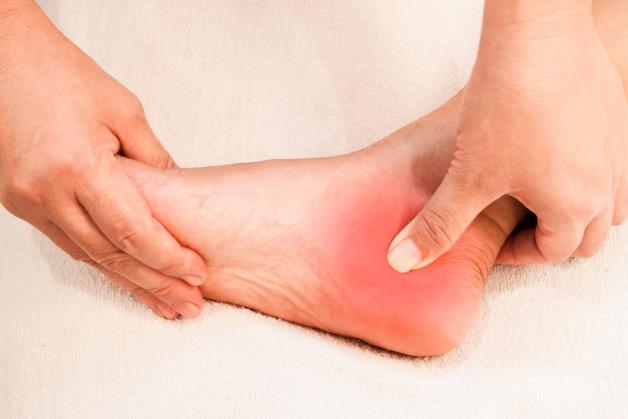Causes and treatment of heel spurs

Heel pain is caused by inflammation of a group of thick connective tissue in the soles of the feet. Treatment methods for heel spurs include rest, physical therapy, orthopedic insoles, chiropractic...
Heel spurs (also known as plantar fasciitis/plantar fasciitis) is an inflammation of a group of thick connective tissue (fascia) that support the lower structures (liver part) of the foot and can affect the heel. Therefore, it is a common cause of heel pain. Treatments for this condition include rest, proper footwear, use of heel pads, pain relievers, and exercise.
Why is it called heel spur (or heel spur)?
Heel spurs are the result of plantar fasciitis/plantar fasciitis. Our foot has a layer of fascia (tendon) that extends from the heel bone to the five toes. The place of attachment of this weight layer is a place of great tension when you run and jump. Due to many reasons, this attachment is weakened, chronic inflammation, and then calcium deposition. When taking X-ray of the foot, we will see a calcified nodule where the fascia attaches to the heel bone, which looks like a heel spur, but in fact this is not a calcaneus. Therefore, the cause of your pain may be due to chronic inflammation of the fascia, not the bone spur that is causing you pain.
What causes heel spurs?
Often there is no obvious cause for heel spurs, especially in the elderly. However, repeated minor trauma to the plantar fascia (with or without inflammation) is thought to be the cause of this problem. Lesions are usually about 4 cm anterior from the heel and may be painful to the touch.
You are more likely to develop heel spurs in some of the following situations:
- You work on your feet for a long time, or walk, run, stand a lot etc., especially when you are not used to it or you have been sedentary before;
- You wear heels with little cushioning;
- Being overweight puts extra pressure on the plantar fascia;
- You have a sudden strain on the soles of your feet from walking up stairs or on tiptoes;
- You have an Achilles tendon strain: this can affect your ankle's ability to extend and damage the plantar fascia.
Initial treatment for heel spurs
Usually, the pain subsides after a while because the fascia is slow to heal. Just like ligament tissue, it can take months or more to heal. However, the treatments below or a combination of them may help you recover more quickly.
- Relax your feet. You need to avoid running, walking too much, or standing and stretching the soles of your feet when you have plantar fasciitis. You should do this as much as possible;
- Footwear. Don't go barefoot on hard surfaces, avoid old or worn shoes as they don't provide good cushioning for your heels, but instead choose shoes with a cushioned heel and good heel support instead. Sneakers are better than sandals;
- Heel pads and arch support. You can buy a variety of insoles to cushion your heels and support your feet and always wear them with your shoes for the best results. The purpose of this is to raise your heel by about 1 cm;
- Pain relief. Applying ice for about 15-20 minutes can help relieve the pain.
- Practice. Gently stretching the Achilles tendon and fascia may help ease your condition as most people with plantar fasciitis often have mild strains of the Achilles tendon. In addition, your plantar fascia tends to contract when you sleep at night, which is why you often feel the most pain when you wake up. The purpose of this exercise is to gently loosen the ligaments and fascia above and below your heels. You should see a physical therapist for exercise instructions.
Heel spurs can become chronic if not treated properly. Arbitrary use of pain relievers not only makes the body resistant to the drug, but also causes many side effects related to the stomach, liver, and kidneys. More importantly, this is not a cure for pain, but can only temporarily relieve pain. When the medication wears off, the pain will return and get worse. The main cause of foot pain is misalignment of the foot structure. Therefore, in order to cure pain completely, it is necessary to determine the exact cause of the disease, from which there is an appropriate course of treatment to restore the damaged structure. Patients can be treated with a combination of chiropractic, medical orthopedic, acupuncture and physical therapy… effective in curing pain and inflammation; help patients restore full foot function.